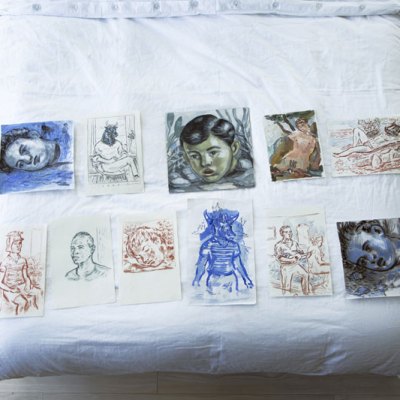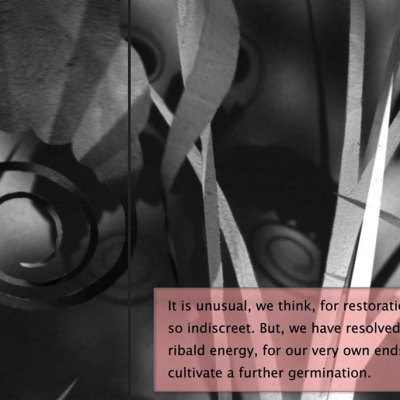I arrive in Havana two weeks before Obama’s historic visit, amidst excited talk of Cuba being in the throes of change. I have chosen to take a day tour of several artists’ studios in the city. My guide is Sussette Martinez, one of the country’s most trusted and established curators, with a reputation for knowing everybody there is to know in the scene. ‘On the left, you’ll see a gynaecological hospital that was built to resemble a uterus,’ she says with a smile as we drive towards the studio of Lisandra Ramírez, a young artist who works primarily in bronze – a difficult material to procure on the island. ‘The entrance to the hospital is an architectural metaphor for where the baby emerges, and there are two blocks on both sides that are meant to be the ovaries.’ Later I notice that this disarming sense of humour is present in my conversations with all the artists I meet. It seems to be an unspoken rule that what cannot be openly presented in public must be treated with playful candour in private, almost as if a national language has been invented to make sense of the many contradictions that define Cuba.
Photo: Amandas Ong
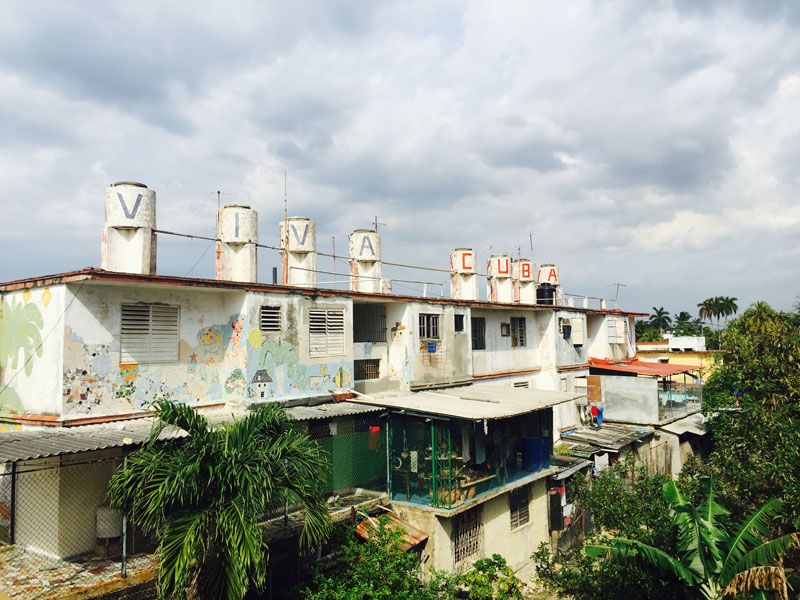
Away from the sensuous drama of the city’s streets, in the cool shade of Ramírez’s garden, we talk about how Cuba’s turbulent history has shaped the work of its artists. ‘For artists like myself who were born onwards of the late 1980s, we react to politics very differently from our predecessors,’ Ramírez explains over cups of coffee. ‘In the first two decades after the revolution, a lot of art in this country was fuelled by a genuine feeling of togetherness, of Cuban people having to work together to prove that socialism was a model that could last. But increasingly, artists of my generation are starting to create works that place a stronger emphasis on individualism, on the idea that we need to rely on ourselves if we are to survive.’ Her own practice revolves around a bricolage of Cuban pop culture iconography. She shows me two resin and acrylic sculptures of cartoon cats wearing sunglasses, with their eyes closed and their mouths curled upwards in satisfaction. ‘I made these to illustrate a point about how younger Cubans don’t really think that much about politics or about Cuba’s place in the world. They remind me of cats: when you place food in front of them and they start eating, they close their eyes in pleasure. They’re completely focused on the food.’
Photo: Amandas Ong
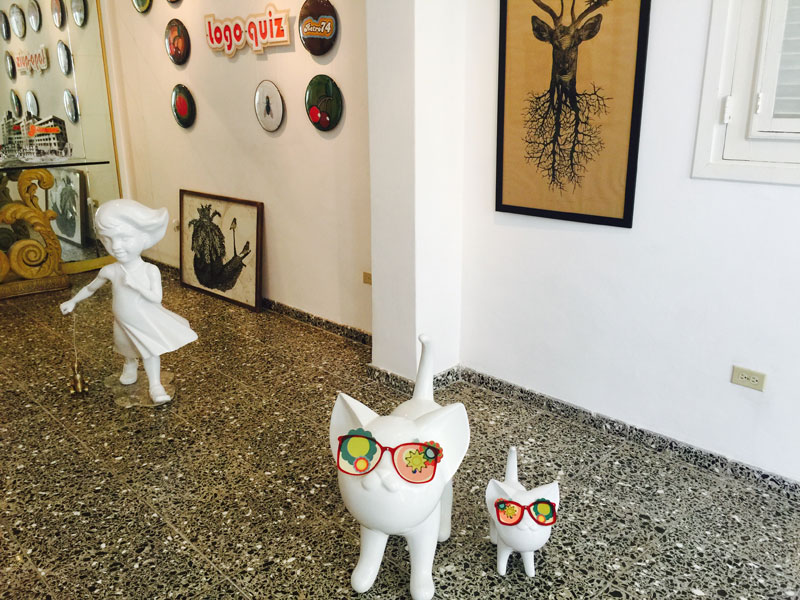
For Eduardo Yanes, whose studio we visit next, this political apathy that Ramírez describes can be in part attributed to a slow process of obliteration. While he is known largely for his paintings of chess games, which allude to the complicated politics of the country, it was a mixed media work sitting in a corner of his studio that haunted me long after I had departed. It is an enlarged copy of a sepia photograph of a class of schoolgirls with their faces cut out, each of the blank spaces occupied by a letter to collectively spell out ‘un dia fuimos familia ahora ya no nos vemos’ (once we were family, now we no longer see each other). ‘I found the photograph while rummaging through an archive for ideas to create new work. I was very unsettled by it: the idea that someone had forcibly tried to erase a part of their younger self and their personal history surely makes one deeply uncomfortable. So much erasure already takes place in our lives, carried out by forces outside our control. In the 1980s, when we were both still in school, the emigration crisis was terrible. People were starting to become disillusioned with the Communist dream for the first time and wanted to leave. I was still at school during the Mariel boatlift, and I remember seeing more and more empty seats in class each day. We were not allowed to talk about our missing classmates or we would be punished. Our teachers said they were traitors and that we must never speak of them again. It was hurtful and strange – we were only children, we shared our lives with these other children, who had merely left to begin new lives somewhere else, not even of their own accord.’
Photo: Amandas Ong
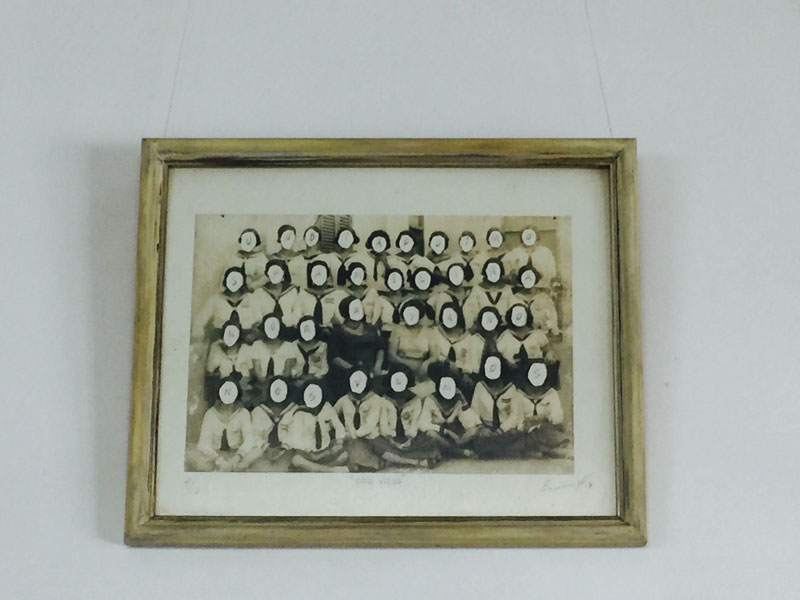
To stay or to leave: this is the conundrum around which all socio-political issues in Cuba always seem to centre. Having been isolated for so many years, the question of what lies beyond the island’s borders is an obsession for many Cubans. Interestingly, many of the country’s artists enjoy greater freedom and influence than their fellow citizens – although the high-profile cases of Tania Bruguera and Danilo Maldonado are a reminder of the limits to this freedom. Official travel restrictions for Cuban citizens were lifted in 2013, but the cost of going abroad is often prohibitive. A combination of relatively good pay and, occasionally, special funding makes it comparatively easy for artists. At the home of Sandra Ramos, one of the country’s most celebrated artists, I was received by her mother as she had gone to Miami to present her work at an art fair. Ramírez tells me that because bronze is hard to find in Cuba, she regularly visits Spain to make her works.
Sussette Martinez with Sandra Ramos’s mother in the artist’s studio. Photo: Amandas Ong
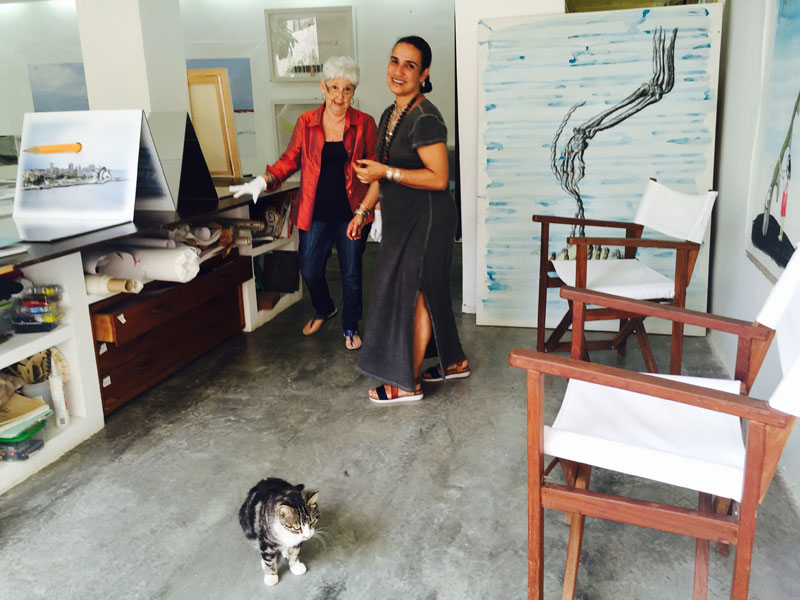
State-approved artists are also granted internet access in their homes while it is prohibited in most households; they receive similar wages to civil servants and doctors; and, most importantly, their profession is taken seriously. Cuba’s most famous and controversial art export, Kcho, is a member of parliament, and government expenditure on cultivating the arts is immense compared to neighbouring countries.
Another artist that I spoke to, José Angel Toirac, shows me a series of paintings that cheekily depict Fidel Castro endorsing symbols of capitalism that he has become exposed to over the years – Coca-Cola bottles, Canon cameras, Yves Saint Laurent perfume bottles. ‘I’m prohibited from showing these at any gallery, for obvious reasons,’ he says, with a twinkle in his eye. I ask him if it would be alright for me to write about these paintings, and he bursts out laughing. ‘And why not? We may still be a socialist country, but in many strange ways, we’re allowed to talk about a lot of things.’
Photo: Amandas Ong
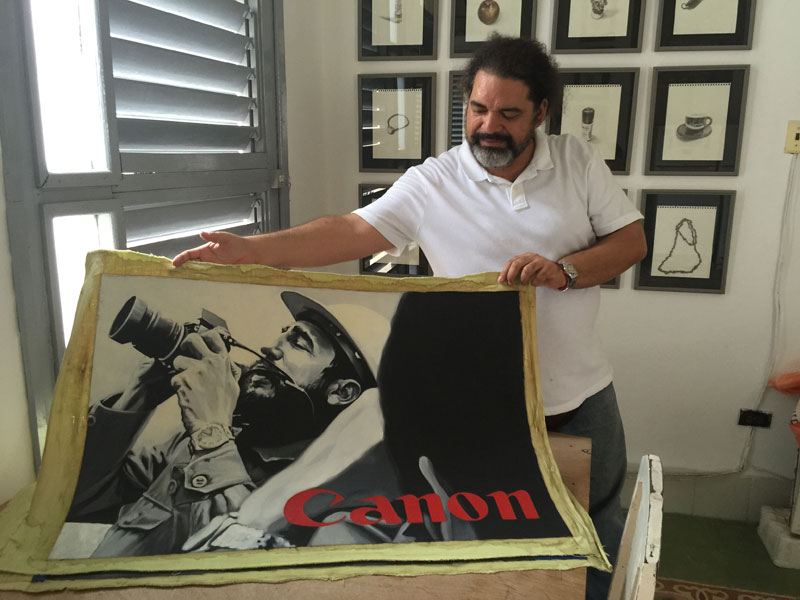
A lot of things – the deliberate vagueness of this phrase provides the essential space that Cuban artists need to negotiate the legalities of what they do. Political commentary in art is mostly fine, unless it involves the image of the Castros (both Fidel and Raul). Raul Castro, a painter who shares the same name as the current president of the country, tells me that he was not allowed to display one of his paintings in public not because of the politically-charged nature of its content, but because of his name. ‘And there’s absolutely nothing I can do about that!’ he shrugs.
Later that evening as I walk towards the Malecón, the esplanade that stretches along the coast of Havana, I think about an offhand comment that Sussette made at the beginning of the day: ‘Cuba is a country for living, not for understanding.’

